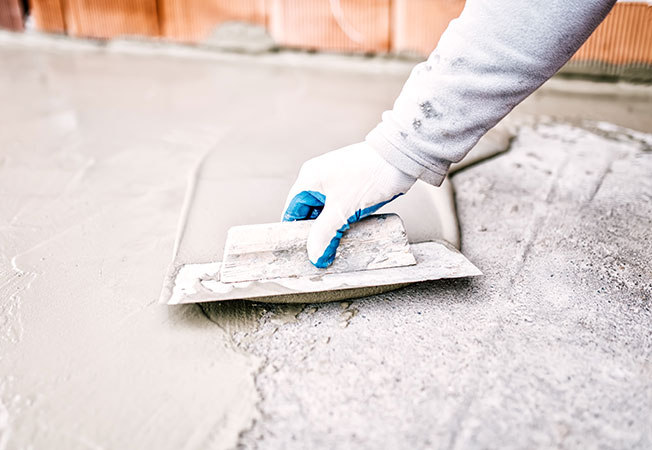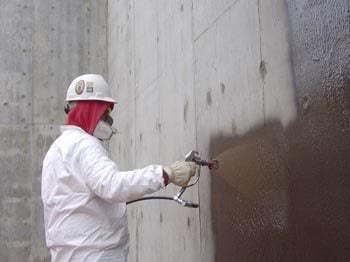The Ultimate Guide to Preventing Water Damage with Water Solutions
Just How Waterproofing Works: A Thorough Consider Methods and Technologies
Waterproofing is vital for safeguarding structures from moisture-related damage. It includes different strategies and innovations that produce obstacles against water invasion. Typical methods, such as compressed clay, exist together with contemporary innovations like liquid-applied membranes. Comprehending the subtleties of these methods is vital for efficient application. The performance of any waterproofing service hinges not only on the techniques used however additionally on continuous maintenance and evaluation. What are the key variables that affect long-lasting performance?
Understanding the Basics of Waterproofing
Waterproofing is a necessary process that secures structures from water breach, which can result in considerable damages in time. This approach involves the application of various products and strategies designed to develop a barrier against dampness. The primary goal is to stop water from penetrating surface areas, which can cause deterioration, mold and mildew development, and architectural instability.Various aspects affect the choice of waterproofing technique, including the kind of structure, its area, and environmental conditions. Understanding the physics of water activity and the properties of various products is vital in selecting an efficient waterproofing solution.Effective waterproofing not just safeguards structures however likewise enhances their longevity and stability. Usually, it is integrated right into the design stage of building to assure thorough security. As understanding of water-related issues expands, the relevance of recognizing waterproofing basics becomes significantly clear to engineers, builders, and residential property owners alike.
Traditional Waterproofing Methods
Typical waterproofing approaches have been made use of for centuries, relying upon tried and true methods and products to protect frameworks from water damage. One of the oldest approaches includes making use of clay, which, when compressed, develops an all-natural barrier versus dampness. Furthermore, asphalt, a sticky, black product obtained from oil, has actually been employed for its waterproof properties, commonly applied to roofings and foundations.Another method includes the application of lime-based plasters, which supply a breathable layer that allows dampness to escape while stopping water access. Thatch roofing, a traditional method still seen in some societies, offers excellent waterproofing because of its tightly loaded straw layers.Moreover, making use of rock and brick has projected, as these products are inherently resistant to water when correctly mounted. Generally, standard waterproofing methods highlight the relevance of picking ideal materials and building and construction practices to improve resilience against water breach.
Modern Waterproofing Technologies
Improvements in modern waterproofing innovations have revolutionized the method frameworks are safeguarded from water damages. Cutting-edge techniques such as liquid-applied membrane layers and innovative sealers have actually improved the performance and convenience of waterproofing remedies. These modern technologies allow for seamless application, lowering the danger of leakages and making certain complete insurance coverage over complicated surfaces.Moreover, the assimilation of wise modern technologies, such as moisture sensors and automated monitoring systems, allows real-time evaluation of waterproofing efficiency. This positive approach facilitates timely upkeep and reduces lasting fixing costs.Additionally, developments in spray-applied layers offer fast application and outstanding adhesion, adjusting to various substrates while providing durable defense. Strategies like polymer-modified systems further enhance adaptability and durability, making them suitable for varied environments. Generally, modern-day waterproofing modern technologies not only alleviate water breach yet likewise add to the long life and sustainability of frameworks, noting a significant shift in the sector.
Products Utilized in Waterproofing
The performance of waterproofing remedies heavily counts on the materials utilized in their application. Numerous materials are utilized to produce barriers against water ingress, each with distinct homes suited for various atmospheres. Commonly made use of products include membrane layers, layers, and sealants.Liquid-applied membranes, usually made from polyurethane or acrylic, develop a seamless obstacle that adjusts to complex surfaces. Sheet membranes, normally created from rubber or thermoplastic, offer resilience and are ideal for bigger areas. Additionally, cementitious waterproofing materials, composed of cementitious substances, give outstanding attachment and flexibility.Sealants made from silicone or polyurethane are important for joints and joints, making sure detailed security. Advanced products, such as geo-composite membranes, incorporate several functions, improving efficiency. Overall, the selection of waterproofing materials is crucial in achieving durable and efficient water resistance, customized to certain job needs and ecological conditions.
Usual Applications of Waterproofing
Waterproofing plays a necessary function in different fields, guaranteeing the durability and integrity of structures. Usual applications include domestic solutions that secure homes, commercial framework that safeguards organizations, and industrial settings that require robust security versus moisture. Comprehending these applications highlights the value of waterproofing waterproof under deck storage in preserving both safety and performance throughout various environments.
Residential Waterproofing Solutions
Several property owners encounter difficulties with moisture intrusion, making effective property waterproofing options crucial. Different methods exist to resolve this issue, consisting of interior and exterior waterproofing systems. Inside options frequently include the application of sealers and coverings to basement walls, which aid prevent water infiltration. Outside approaches commonly consist of the setup of drainage systems and water-proof membranes that draw away water far from the foundation.Additionally, house owners may think about sump pumps to get rid of water buildup and dehumidifiers to regulate humidity levels. Correct grading and the usage of seamless gutters likewise play an important function in managing water circulation around the home. By applying these strategies, house owners can considerably minimize the risk of water damages and mold development, making sure a completely dry and risk-free living environment.

Commercial Framework Defense
Reliable waterproofing remedies play a critical function in the protection of business framework. Landscape drainage Omaha. These techniques are important for guarding structures, parking frameworks, and bridges from water damage, which can endanger structural integrity and lead to costly repairs. Typical applications include the installment of membranes, coverings, and sealers that produce barriers versus dampness seepage. Locations such as cellars, roofings, and outside walls are commonly focused on to guarantee longevity and sturdiness. Additionally, visit homepage waterproofing systems can improve energy efficiency by preventing water-related concerns that may lead to mold development and degeneration. By executing robust waterproofing steps, homeowner can safeguard their investments and maintain functional effectiveness, ultimately adding to the general sustainability of industrial centers
Industrial Applications Overview
While different markets deal with unique difficulties, the need for trustworthy waterproofing options continues to be a continuous in industrial applications. Industries such as manufacturing, construction, and power typically experience environments where moisture exposure can threaten architectural honesty and functional effectiveness. In manufacturing facilities, waterproofing is important for safeguarding machinery and materials from water damages. In building, it safeguards structures and cellars against groundwater infiltration. The energy market relies upon waterproofing for the protection of tools in hydroelectric plants and overseas structures. Additionally, food handling sectors use waterproofing to guarantee hygiene and compliance with safety standards. In general, effective waterproofing solutions are essential for boosting sturdiness, safety and security, and performance across various commercial settings.
Upkeep and Long Life of Waterproofing Solutions
Although waterproofing services are created to provide long-lasting protection against dampness intrusion, routine maintenance is crucial to guarantee their performance and longevity - Landscape drainage Omaha. Routine assessments play a considerable role in recognizing possible issues such as cracks, peeling, or indicators of water damages. Attending to these you could try this out troubles immediately can avoid further degeneration and pricey repairs.Additionally, cleansing the surface area of waterproof areas aids eliminate dirt and particles that can compromise the stability of the waterproofing barrier. It's additionally advisable to reapply safety coverings or sealants as advised by manufacturers to maintain suitable efficiency. Ecological factors, such as UV exposure and extreme climate condition, can impact the lifespan of waterproofing products, making regular analysis important
Frequently Asked Questions
Can Waterproofing Be Applied in Winter?
The question of applying waterproofing in winter increases issues regarding bond and curing. Numerous items might not execute at their finest in low temperature levels, necessitating careful option and factor to consider of particular standards for effective application.
How Long Does Waterproofing Typically Last?
The duration of waterproofing efficiency varies based upon products and environmental aspects. Usually, it can last from five to 10 years, yet routine maintenance and examinations are important to ensure peak performance and durability.
Is Do It Yourself Waterproofing Effective and Safe?
The performance and safety and security of DIY waterproofing rely on different elements, consisting of worldly top quality and application technique. While some people accomplish acceptable results, others might run into concerns that jeopardize long-lasting protection and architectural stability.
What Are the Indicators of Failing Waterproofing?
Indications of falling short waterproofing consist of visible water stains, peeling paint, mold and mildew growth, musty smells, and wetness in walls or ceilings - Basement waterproofing Omaha. These indicators suggest jeopardized obstacles, demanding punctual examination and possible removal to protect against further damage
Just how Do I Choose the Right Waterproofing Service Provider?
